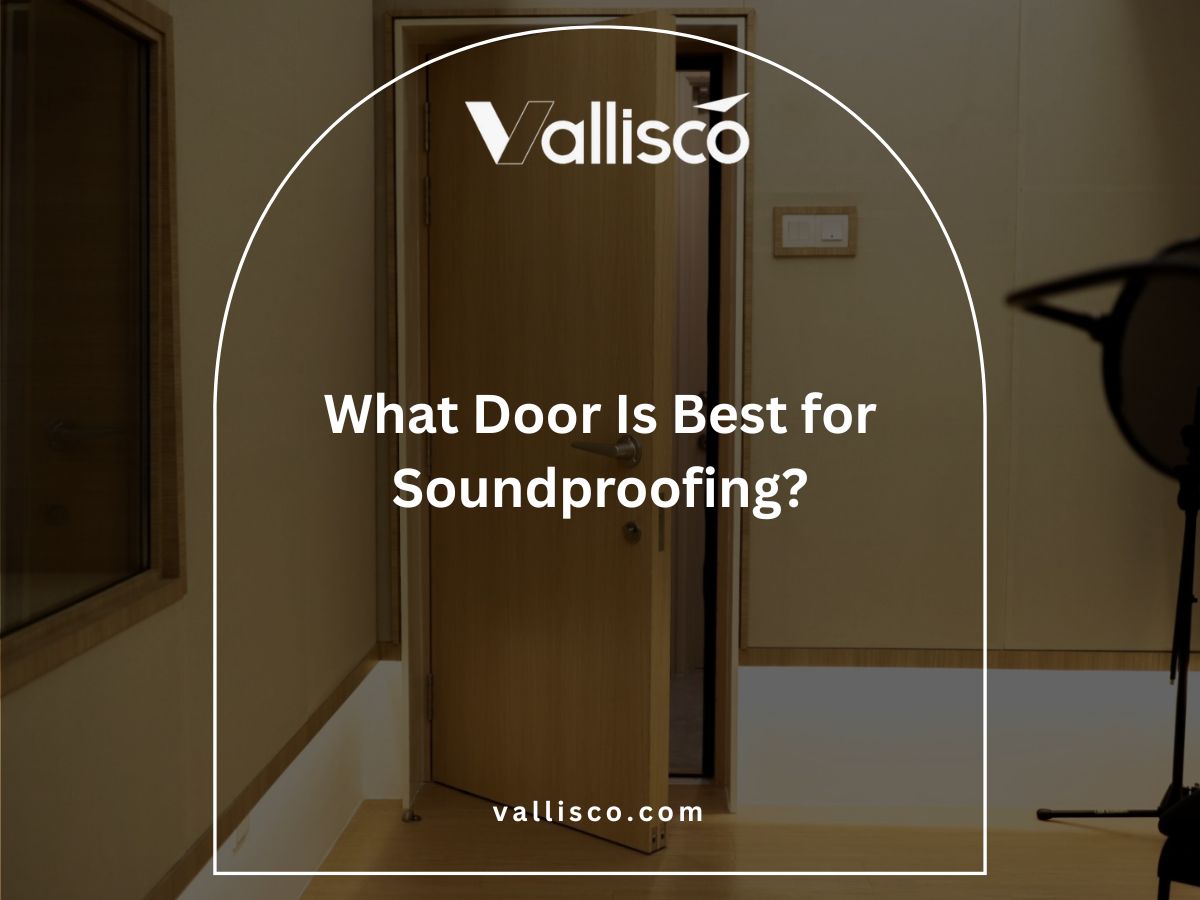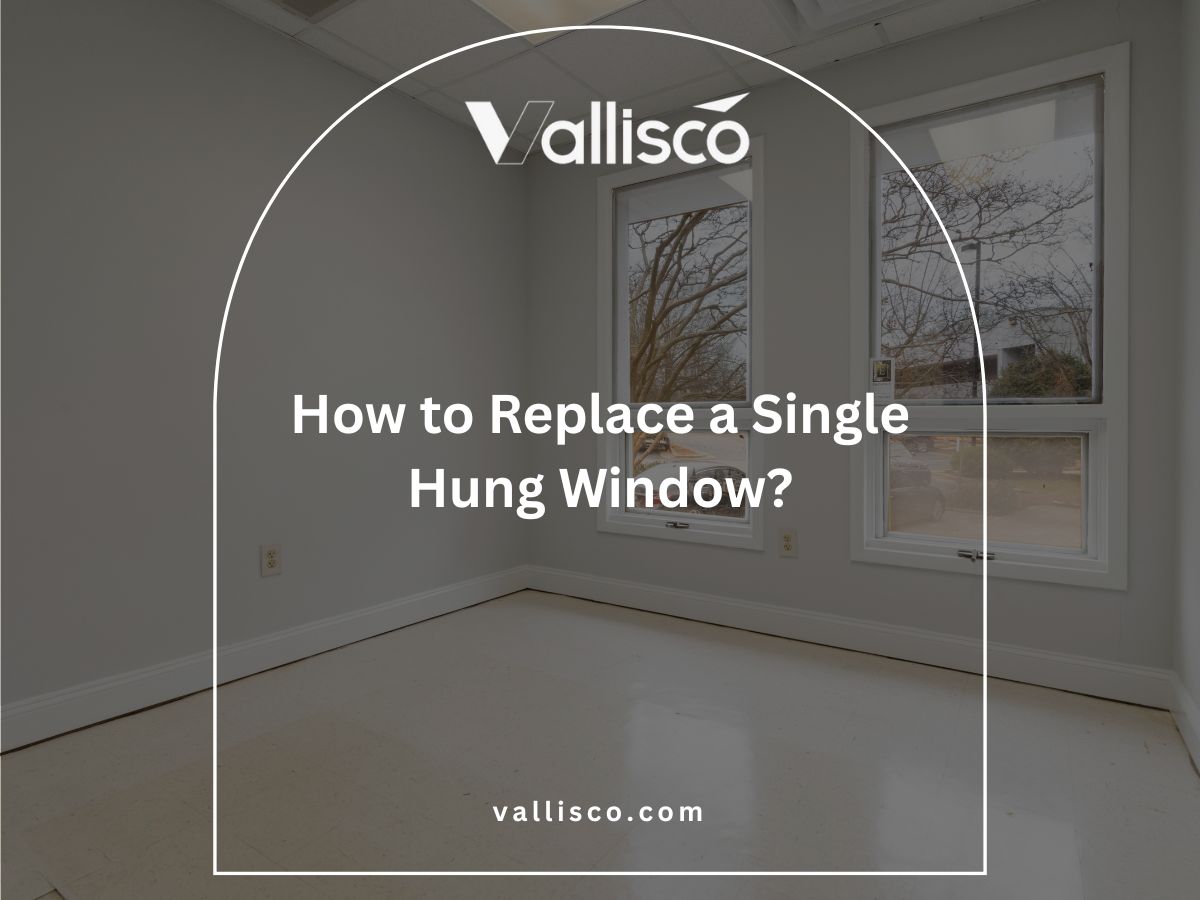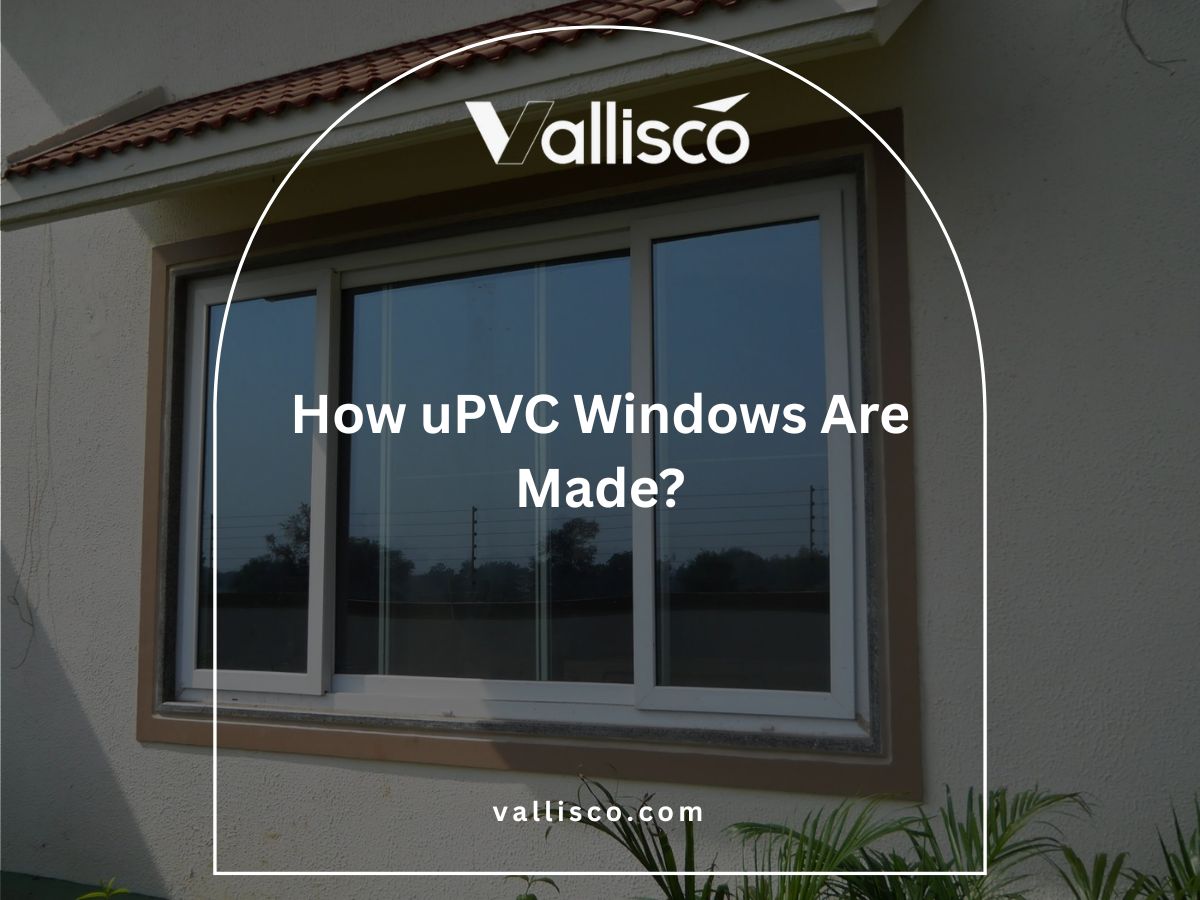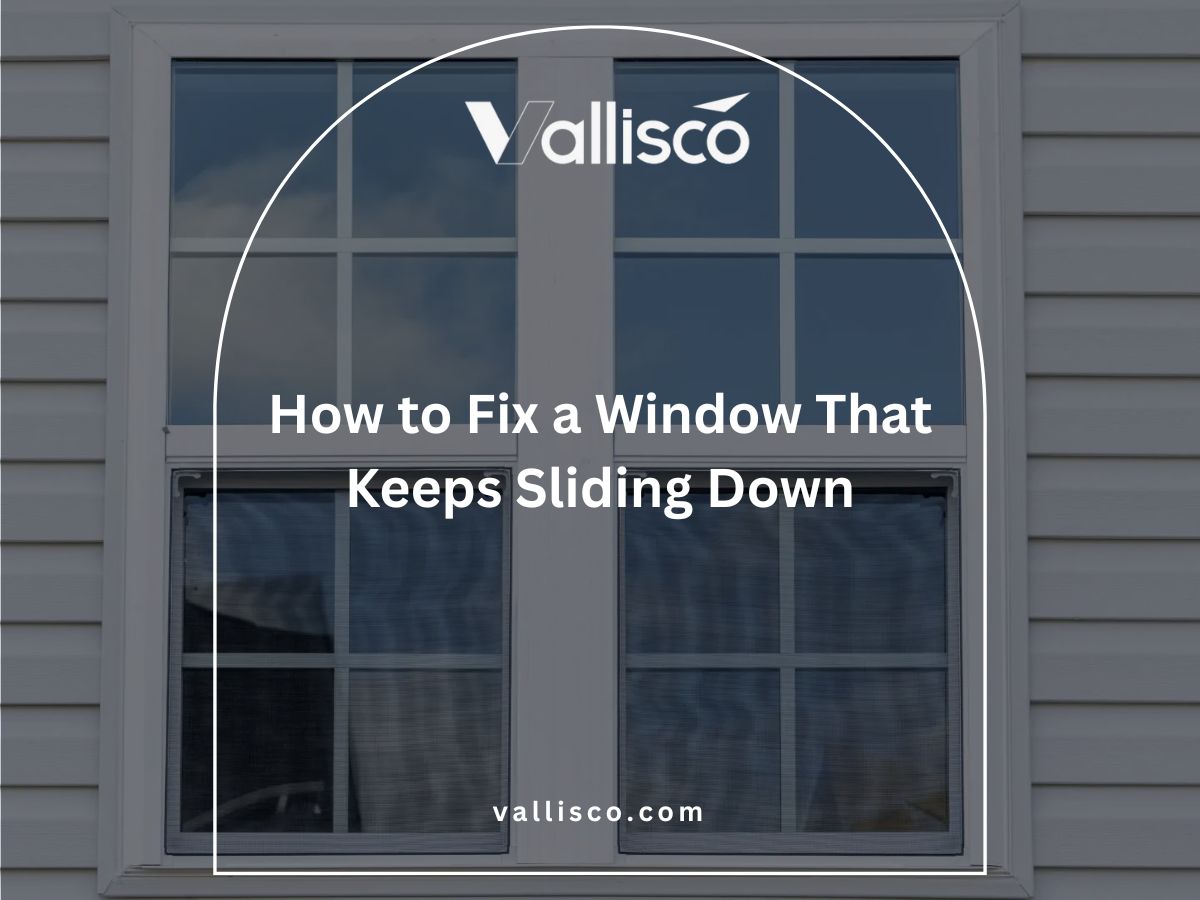I’ve walked into hotels where the entrance felt right the moment I touched the door. I’ve also seen the opposite a door that looked cheap or out of place, setting the wrong tone.
That’s why I pay close attention to doors. They shape first impressions more than most people think.
Over the years, I’ve worked with property owners and project teams facing the same challenge you do: choosing doors that look good but also last.
I’ve seen which options hold up under constant use, and that’s the experience I’m bringing to you here.
In this article, you’ll find ten hotel door design ideas that balance style, durability, and function. By the time you’re finished, you’ll have practical options you can apply to your own projects.
The first thing guests see should give them confidence, not doubt.
So let’s start!
Every hotel is different, and every door serves a purpose. Here’s a snapshot to help you get a feel for what each design does best so you can start narrowing down your favorites.
| Design | Key Strengths | Best Use Cases | Limitation / Not Ideal For |
| Flush Panel Doors with Hidden Frames | Seamless, modern look that blends into walls | Luxury suites, executive floors, minimalist lobbies | Spaces needing decorative detailing or traditional style |
| Wooden Doors with Vertical Slats | Warm, elegant lines that add texture | Main entrances, spas, upscale guest rooms | Very humid areas without proper protective coating |
| Arched Double Doors | Grand, architectural statement | Lobbies, ballrooms, heritage hotels | Tight spaces or areas with low ceilings |
| Glass Doors with Frosted or Patterned Designs | Light-filled privacy with custom branding | Spas, meeting rooms, exclusive lounges | High-noise areas without added seals |
| Metal-Framed Glass Doors | Durable with an open, connected feel | Lobbies, restaurants, fitness facilities | Spaces needing complete visual privacy |
| Pivot Doors with Oversized Handles | Bold, modern movement and tactile experience | Main lobbies, VIP entrances, boutique properties | Small doorways or low-traffic areas where impact is minimal |
| Carved Wood Doors with Local Motifs | Cultural storytelling and craftsmanship | Resorts, heritage hotels, specialty suites | Projects with tight timelines or limited artisan availability |
| Louvered Doors | Ventilation with privacy | Utility closets, spas, wardrobes | Areas needing soundproofing or full privacy |
| Matte Black Doors with Contrasting Trim | Strong visual contrast and modern style | Guest corridors, lobbies, lounges | Dimly lit spaces where contrast is lost |
| Fire-Rated Doors with Wood Veneer Finish | Safety with natural warmth | Corridors, stairwells, event spaces | Exterior use in unprotected weather conditions |
Ready to learn more? Let’s go section by section and help you find the door that fits your hotel inside and out.
1. Flush Panel Doors with Hidden Frames
I once walked into a newly renovated hotel where the guest room doors blended so perfectly into the walls that I almost missed mine. The surface was smooth from top to bottom. No visible hinges. No bulky frame. It felt like stepping into a space that valued design as much as comfort.
Flush panel doors have a flat, even surface. They don’t have raised or recessed patterns. A hidden frame means the surrounding structure is concealed, creating a seamless connection between the wall and the door. The result is clean and modern.
Key Features
- Smooth Surface Design: The entire face of the door is flat, which creates a minimalist look. This style works well in spaces where visual simplicity is a priority.
- Concealed Hardware: Hinges and frame components are hidden from sight, keeping the focus on the wall and door finish. This helps maintain a streamlined appearance throughout the space.
- Versatile Finish Options: These doors can be finished with wood veneer, laminate, or paint. Each option allows you to match the door with your existing interior style.
Best Use Cases in Hotels
- Luxury Suites and Executive Floors: These spaces benefit from a refined, uncluttered look that flush panel doors provide. They help elevate the overall impression for guests.
- Conference Rooms and Private Lounges: The sleek design fits well in formal meeting areas. It creates a professional, distraction-free environment.
- Boutique Hotel Hallways: In themed spaces, every detail matters. A flush panel door blends in and supports the design concept.
Practical Considerations
- Precision Installation: Accurate measurements are essential for proper alignment. Even a small error can disrupt clean lines.
- Controlled Environment: Works best indoors where temperature and humidity remain stable. This reduces the risk of warping or swelling.
- Custom Fabrication: Many designs require made-to-order production. This may increase both cost and delivery time.
I’ve seen these doors used in properties aiming for a minimalist style. In those spaces, every element has to work together. A standard framed door can disrupt that flow, but a flush panel blends in and keeps the focus on the overall design.
Why Choose This Design
It creates a smooth, uninterrupted look that leaves a lasting impression on guests who value style and detail. This design helps your space feel intentional, polished, and more inviting from the moment someone steps inside.
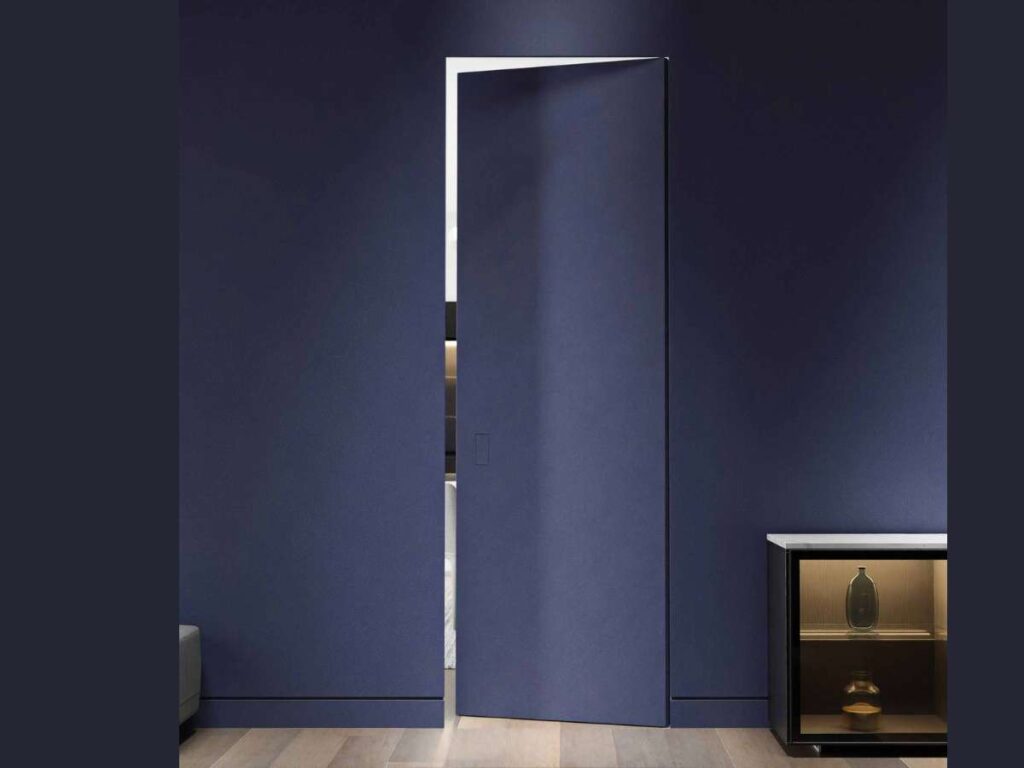
2. Wooden Doors with Vertical Slats
Walking into a hotel where the entrance door is crafted from rich wood with slender vertical slats can be unforgettable. The natural lines draw the eyes upward, giving the doorway a sense of height and sophistication. When sunlight or indoor lighting hits the surface, the shadows between the slats create depth and texture that guests notice instantly.
A vertical slat door features narrow, evenly spaced wood panels running from top to bottom. This layout blends the warmth of timber with a clean, modern form. It works in both contemporary spaces and those aiming for a timeless design.
Key Features
- Elegant Vertical Lines: The tall, narrow slats naturally lead the eye upward. This effect can make an entrance feel taller and more refined without altering its size.
- Natural Wood Warmth: Wood brings a sense of authenticity and comfort. Guests often associate it with quality, tradition, and thoughtful design.
- Versatile Finishes: Options include staining to showcase natural grain or painting for a smooth, uniform surface. Both approaches adapt easily to different hotel styles.
Best Use Cases in Hotels
- Main Entrances for Luxury or Boutique Hotels: Creates a distinctive first impression that reflects attention to detail.
- Spa or Wellness Centers: Combines natural material and calming lines for a soothing atmosphere.
- Premium Guest Room Doors: Adds texture and visual interest to hallways while maintaining a cohesive design theme.
Practical Considerations
- Material Selection: Hardwoods such as oak or teak withstand frequent use better than softer woods.
- Climate Protection: In humid or coastal locations, applying protective coatings helps reduce swelling and warping.
- Maintenance Needs: Regular cleaning and periodic refinishing keep the wood’s appearance sharp.
When planned correctly, this style delivers both durability and elegance. A reliable supplier, proper finishing, and ongoing care will keep vertical slat doors looking impressive year after year.
Why Choose This Design
Wooden doors with vertical slats provide an upscale look that balances style and warmth. They make entrances more inviting while reinforcing the property’s character from the moment guests arrive.

3. Arched Double Doors
There is something unforgettable about walking through a grand set of arched double doors. The curved top softens the overall shape while still making the entrance feel stately. In hotels, this design instantly signals that the space beyond is special, whether it is a lobby, ballroom, or garden terrace.
An arched double door consists of two panels that meet in the center, with the top frame shaped into a smooth curve. This design can be crafted from wood, metal, or glass, and often features decorative details that fit the property’s style. It blends architectural drama with practical function, making it both an entryway and a visual focal point.
Key Features
- Architectural Impact: The arch creates a sense of grandeur that elevates the surrounding space. Guests often perceive this as a mark of quality and prestige.
- Symmetrical Design: Both panels open from the center, creating a balanced, welcoming effect. This symmetry can make larger spaces feel even more impressive.
- Material Versatility: Works with hardwoods, metal frames, or glass inserts. Each material changes the overall feel, from traditional to modern.
Best Use Cases in Hotels
- Main Lobby Entrances: Creates a striking first impression as guests arrive.
- Ballrooms and Event Spaces: Signals a transition into an elegant or celebratory environment.
- Heritage Properties: Complements historic architecture and traditional interior styles.
Practical Considerations
- Structural Support: The weight and size often require reinforced framing.
- Custom Hardware: Hinges, locks, and handles must match the door’s scale and design.
- Higher Investment: Custom fabrication and installation can increase cost and lead time.
Proper planning is key for this design. From choosing the right materials to working with experienced installers, every step contributes to a door that functions well and retains its beauty.
Why Choose This Design
Arched double doors create a lasting impression of elegance and hospitality. They transform any entrance into a memorable experience, leaving guests with the sense that they have stepped into a space worth remembering.
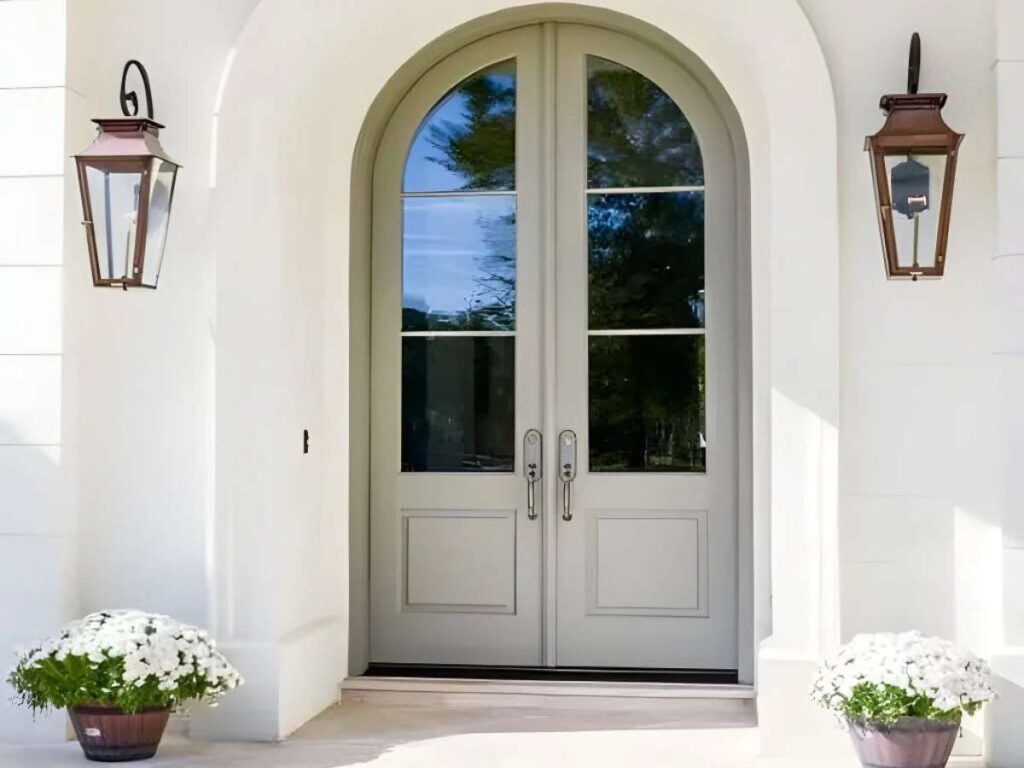
4. Glass Doors with Frosted or Patterned Designs
A well-designed glass door can completely change how guests experience a space. The moment they approach, the light passing through the frosted or patterned surface feels inviting but still private. You can sense the balance between openness and separation, where the design protects privacy while still hinting at what lies beyond.
Frosted glass is treated to create a translucent surface that blurs what is on the other side. Patterned designs go a step further, adding shapes, textures, or brand elements into the glass. Both styles allow light to filter through while softening the view, making them ideal for areas where you want to keep a bright, airy feel without full visibility.
Key Features
- Privacy with Light: Frosted or patterned glass lets in natural or artificial light while obscuring direct views. This creates a secure but welcoming environment.
- Custom Design Options: Patterns can range from simple geometric lines to intricate brand-inspired artwork. This allows the door to become part of the property’s identity.
- Material Durability: Uses tempered or laminated glass, which is stronger and safer than standard glass. This reduces the risk of breakage in high-traffic areas.
Best Use Cases in Hotels
- Spa and Wellness Areas: Keeps the space bright while giving guests the privacy they expect.
- Meeting or Conference Rooms: Maintains a professional look while providing a sense of separation.
- Entryways to Exclusive Areas: Offers a preview of the space while maintaining a level of discretion.
Practical Considerations
- Cleaning Requirements: Fingerprints and smudges may be more visible, so regular maintenance is important.
- Pattern Placement: The density and location of the design will affect privacy levels.
- Safety Standards: Glass must meet local safety codes for commercial spaces.
With the right design approach, these doors can be both functional and visually appealing. Working with a supplier experienced in custom glass projects helps achieve the ideal balance of light, privacy, and style.
Why Choose This Design
Glass doors with frosted or patterned designs create a sense of elegance while maintaining guest comfort. Vallisco has seen how the right glass door can bring light into a space, support privacy, and add a subtle layer of style that elevates the overall atmosphere.
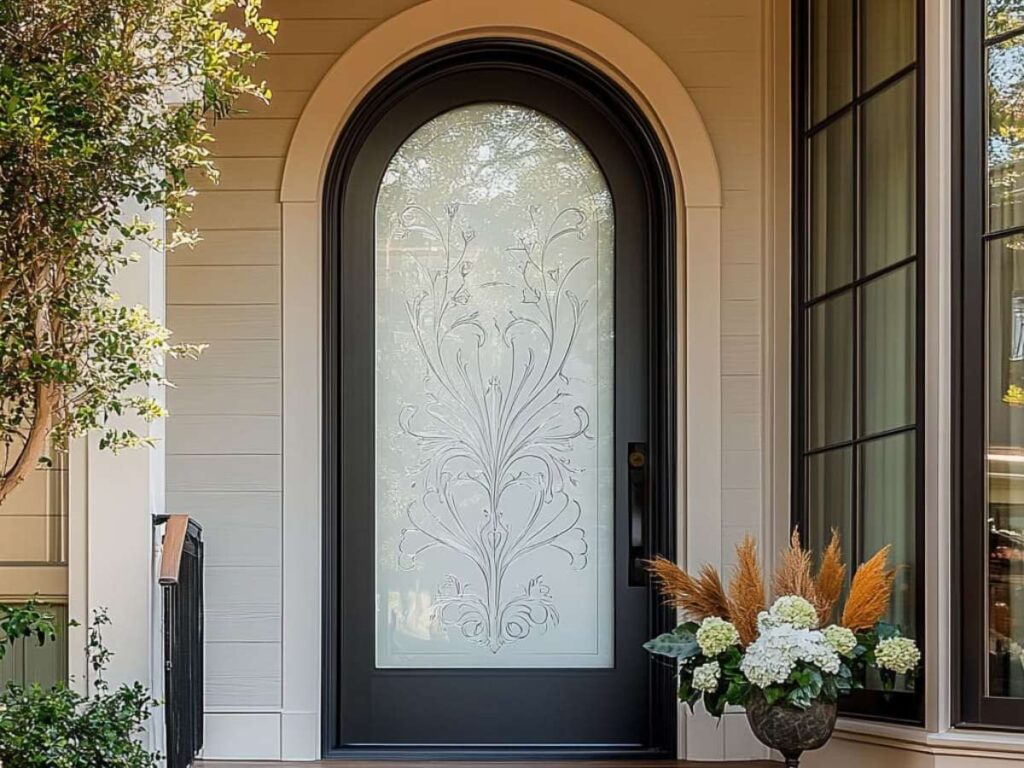
5. Metal-Framed Glass Doors
Metal-framed glass doors have a presence that feels strong yet refined. The slim metal edges give structure to the glass, while transparency keeps the space open and connected. Guests can see through to the area beyond, creating curiosity without losing the sense of separation between spaces.
The frame is typically made from steel, aluminum, or other durable metals. These materials provide stability to the glass panels and protect against daily wear. The design works well in both modern and industrial-style properties, but it can also be adapted for more traditional spaces with the right finish.
Key Features
- Slim Frame Profile: The narrow metal frame outlines the glass without overpowering it. This keeps the look light while adding structural integrity.
- Material Durability: Metals like steel or aluminum handle heavy use in busy areas. They are resistant to bending, cracking, and long-term wear.
- Finish Variety: Frames can be powder-coated, painted, or left with a natural metal finish. Each option changes the overall mood of the space.
Best Use Cases in Hotels
- Lobby to Restaurant Entrances: Creates a sense of openness while marking the transition between public and dining areas.
- Spa and Fitness Facilities: Lets in light while separating wellness spaces from corridors.
- Meeting or Event Spaces: Add sophistication to professional areas without making them feel closed off.
Practical Considerations
- Corrosion Protection: In humid or coastal areas, protective coatings prevent rust or surface damage.
- Glass Replacement Options: Working with a modular frame design can make replacing damaged panels easier.
- Weight and Support: Heavier frames may require reinforced mounting for long-term stability.
When integrated thoughtfully, metal-framed glass doors can become a standout design element that connects spaces visually while supporting the building’s overall style.
Why Choose This Design
Metal-framed glass doors combine durability with an open, inviting feel. They work across different hotel areas, giving guests a sense of connection between spaces while maintaining a polished and professional appearance.
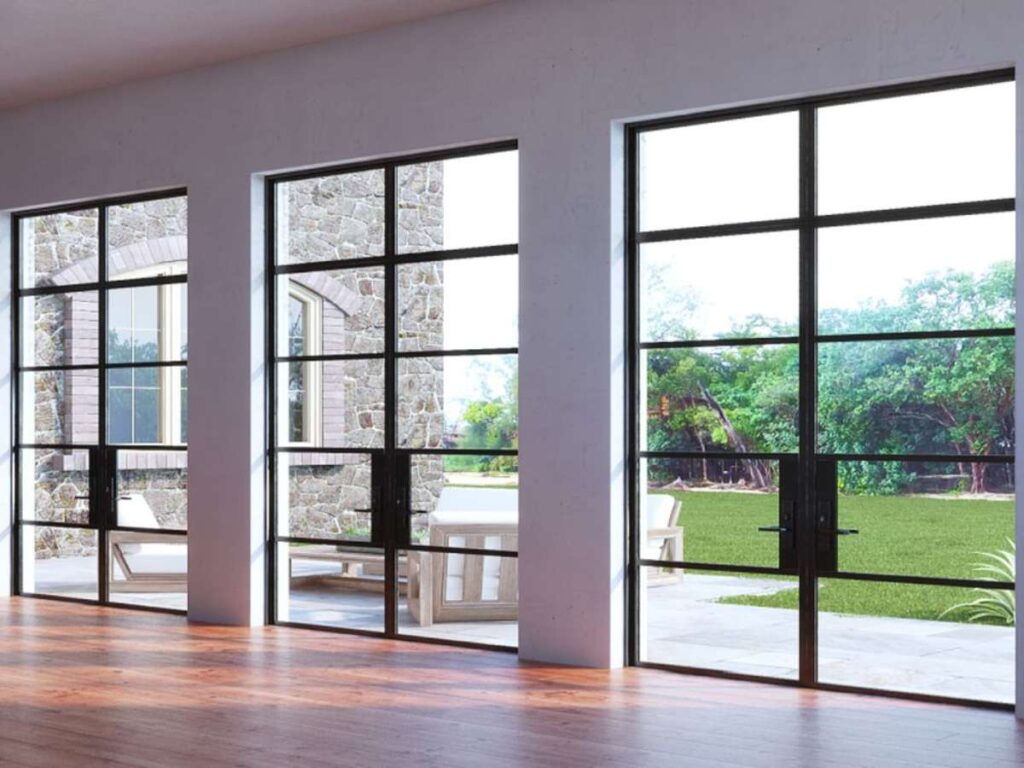
6. Pivot Doors with Oversized Handles
A pivot door has a certain way of announcing itself before you even step inside. The way it rotates from a central point rather than swinging on side hinges feels smooth and intentional. Add an oversized handle, and suddenly the act of opening the door becomes part of the experience for guests.
Unlike a traditional hinged door, a pivot door turns on a pivot box installed at the top and bottom. This allows the panel to be larger and heavier while still moving easily. Oversized handles are not just decorative. They improve grip, make the door easier to use, and can be designed to match the property’s overall style.
Key Features
- Central Pivot Mechanism: The door rotates on a vertical axis, allowing for wider and taller panels. This creates a dramatic effect when opened.
- Oversized Handle Design: Larger handles provide a more comfortable and accessible grip. They also double as a visual focal point.
- Customizable Materials: Panels can be made from wood, glass, or metal, giving flexibility in matching the hotel’s theme.
Best Use Cases in Hotels
- Main Lobby Entrances: Offers a grand, memorable arrival for guests.
- VIP or Event Entrances: Signals exclusivity and sets the tone for special spaces.
- Modern Boutique Properties: Works well with contemporary designs that value bold architectural elements.
Practical Considerations
- Hardware Requirements: Pivot hardware must be rated for the door’s weight and size.
- Structural Support: The floor and ceiling need reinforcement to hold the pivot mechanism securely.
- Maintenance Planning: Regular checks keep the pivot movement smooth and noise-free.
When placed in a prominent location, pivot doors with oversized handles can turn an ordinary entrance into a signature feature. The movement feels distinctive, and the large handle invites guests to engage with the space in a tactile way.
Why Choose This Design
Pivot doors with oversized handles make a statement before guests even walk inside. They combine bold style with functional ease, offering a design that feels both impressive and inviting.
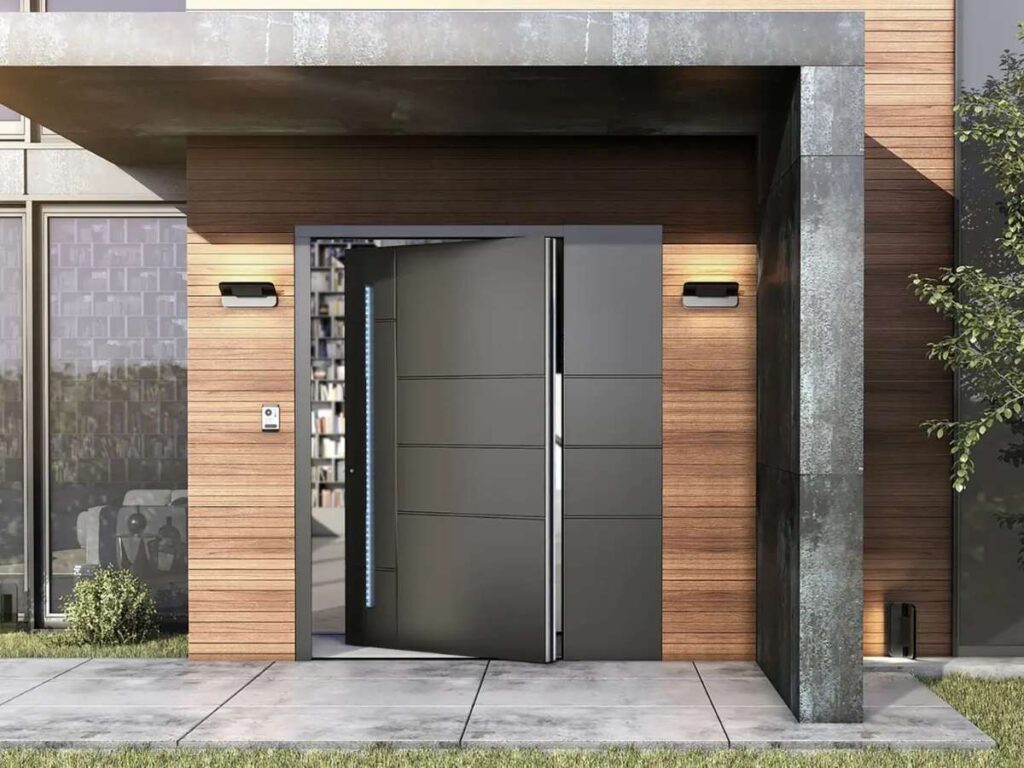
7. Carved Wood Doors with Local Motifs
A carved wood door tells a story before a guest even steps inside. The patterns, shapes, and symbols etched into the surface reflect a sense of place that guests immediately connect with. In many hotels, these doors become more than just an entry point. They become part of the memory guests take home.
Local motifs are design elements inspired by the region’s culture, history, or natural environment. These can include floral patterns, geometric symbols, or depictions of local landmarks. When carved into high-quality wood, they add depth, texture, and authenticity to the space.
Key Features
- Cultural Storytelling: The carvings communicate the area’s heritage or traditions. Guests appreciate the connection to the location and its history.
- Craftsmanship Detail: Hand-carved elements bring a sense of artistry that mass-produced doors lack. Each piece is slightly different, adding character.
- Durable Materials: Hardwoods like mahogany, oak, or teak are often used for longevity and a rich finish.
Best Use Cases in Hotels
- Resort Entrances: Sets the tone for a destination-focused experience.
- Heritage or Historic Hotels: Enhances the connection to local culture.
- Specialty Suites or Villas: Makes certain rooms stand out and feel more exclusive.
Practical Considerations
- Skilled Artisan Work: High-quality carving requires trained craftspeople, which may increase lead times.
- Protective Coatings: Applying sealants helps guard against moisture, sunlight, and wear.
- Maintenance Planning: Dust and dirt can collect in carved details, so regular cleaning is important.
When incorporated thoughtfully, carved wood doors with local motifs add both function and a sense of identity to a hotel. They can also become a talking point for guests who appreciate cultural authenticity in design.
Why Choose This Design
Carved wood doors with local motifs give guests a visual connection to the place they are visiting. They blend artistry with function, turning an everyday element into a lasting part of the guest experience.
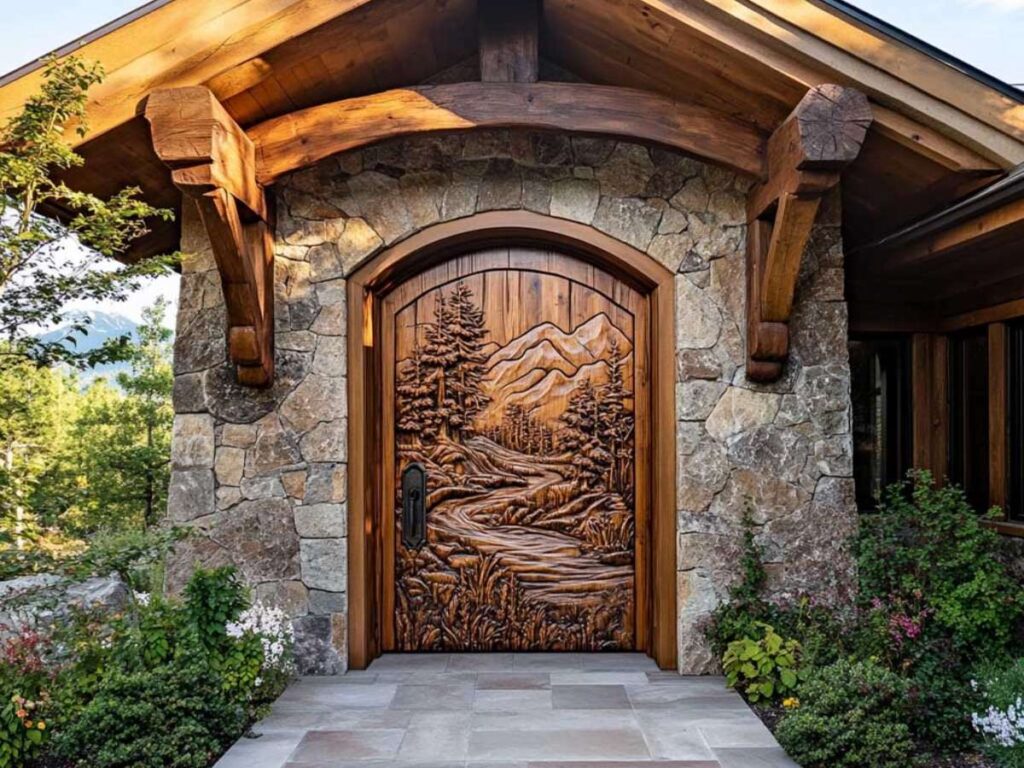
8. Louvered Doors
Louvered doors have a distinct look that blends style with function. Their surface is made up of horizontal slats, or louvers, that allow air to pass through while keeping the door closed. In hotels, this design is especially useful for areas that need ventilation without sacrificing appearance. Guests might not always notice the slats right away, but they will feel the difference in airflow and comfort.
Louvers can be fixed at an angle or adjustable, depending on the door’s purpose. They are typically made from wood, metal, or composite materials. The angled design allows for privacy while still letting air circulate, making them ideal for spaces that benefit from a steady exchange of air.
Key Features
- Ventilation Support: Louvers promote airflow between spaces. This helps reduce humidity, control temperature, and keep enclosed areas fresh.
- Privacy Retention: The angled slats block direct lines of sight. This provides discretion without needing a solid door.
- Material Flexibility: Can be made from wood for a warm appearance, metal for durability, or composite for low maintenance.
Best Use Cases in Hotels
- Utility Closets and Laundry Rooms: Keeps equipment areas ventilated to prevent moisture build-up.
- Spa or Pool Changing Areas: Allows for air movement while maintaining guest privacy.
- Wardrobes in Guest Rooms: Prevents musty odors by letting fresh air flow through stored clothing.
Practical Considerations
- Dust and Debris Build-Up: Louvers can collect dust and require regular cleaning to stay fresh.
- Angle and Spacing: Choosing the right louver angle balances privacy with ventilation needs.
- Finish Protection: In humid areas, moisture-resistant coatings can extend the life of the material.
When used thoughtfully, louvered doors can enhance both the comfort and functionality of a hotel space. They work best in locations where airflow matters as much as privacy.
Why Choose This Design
Louvered doors provide an effective way to maintain ventilation while keeping spaces visually appealing. They bring a practical solution that supports guest comfort and the long-term upkeep of your property.

9. Matte Black Doors with Contrasting Trim
Matte black doors have a bold, confident presence. When paired with a contrasting trim, they create a striking visual effect that instantly draws attention. In a hotel setting, this combination can turn an ordinary doorway into a design feature that guests remember.
The matte finish absorbs light rather than reflecting it, giving the surface a smooth, understated look. The trim, whether painted in a bright color, metallic tone, or natural wood, frames the door like a piece of art. This high-contrast style works well in spaces where you want to highlight architectural details or add a modern edge.
Key Features
- Bold Color Contrast: The difference between the black door and the lighter or brighter trim creates a strong visual boundary. This makes the doorway stand out within the overall space.
- Matte Surface Appeal: The non-reflective finish gives the door a refined and modern appearance. It also hides minor surface imperfections better than glossy finishes.
- Versatile Trim Options: Trim can be wood for warmth, metallic for sophistication, or painted to match the property’s brand colors. Each choice changes the mood of the design.
Best Use Cases in Hotels
- Modern Guest Room Entrances: Creates a high-end, contemporary look in corridors.
- Feature Doors in Lobbies: Draws the eye and serves as a focal point for the reception area.
- Restaurant or Lounge Entrances: Add drama and style to social spaces.
Practical Considerations
- Durable Coating: Matte finishes can show fingerprints and smudges, so a high-quality coating helps reduce upkeep.
- Lighting Coordination: Proper lighting highlights the contrast between the door and trim.
- Design Balance: The surrounding walls and décor should complement the strong visual impact of this style.
When matched with the right surroundings, matte black doors with contrasting trim can transform a space from ordinary to memorable. The effect is both contemporary and timeless, making it a flexible choice for many hotel designs.
Why Choose This Design
Matte black doors with contrasting trim bring sophistication and impact in equal measure. They enhance the visual identity of your property while leaving a lasting impression on every guest who walks through them.
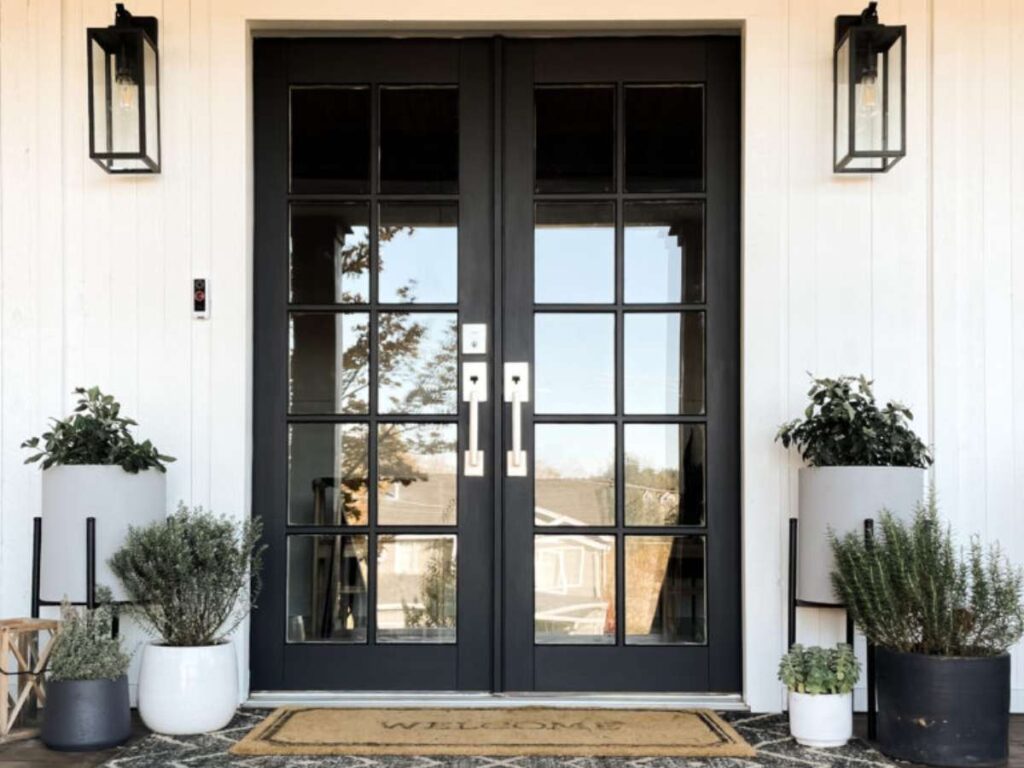
10. Fire-Rated Doors with Wood Veneer Finish
Safety is a priority in any hotel, but that doesn’t mean design has to be sacrificed. Fire-rated doors with a wood veneer finish combine both protection and visual appeal. They meet strict safety requirements while offering the warmth and style of real wood.
A fire-rated door is built to withstand fire for a specific amount of time, usually measured in minutes. The veneer is a thin layer of natural wood applied to the door’s surface, giving it the same look and texture as solid wood. This combination means you can keep a consistent design throughout the property without compromising safety codes.
Key Features
- Fire Protection Rating: Available in ratings such as 20, 45, 60, or 90 minutes. These times indicate how long the door can resist fire before failing.
- Natural Wood Appearance: The veneer offers the same grain, color, and texture as solid wood. This makes it easier to match the door with existing décor.
- Custom Finish Options: Veneers can be stained, painted, or left in a clear finish. Each choice changes the tone and character of the door.
Best Use Cases in Hotels
- Guest Room Corridors: Meets safety requirements while keeping a cohesive hallway appearance.
- Stairwells and Emergency Exits: Provides code-compliant safety without looking industrial.
- High-Occupancy Event Spaces: Offers protection in areas where large groups gather.
Practical Considerations
- Compliance Verification: Fire ratings must meet local building regulations for commercial spaces.
- Installation Requirements: Proper fitting is critical to maintain the door’s fire rating.
- Veneer Maintenance: Regular cleaning and occasional refinishing will keep the surface looking fresh.
By combining safety performance with a high-end finish, these doors bridge the gap between function and style. They allow you to meet code while giving guests a visually appealing environment.
Why Choose This Design
Fire-rated doors with a wood veneer finish offer safety, style, and consistency throughout the property. They protect your guests while maintaining the warm, inviting feel that keeps them comfortable and reassured.
Final Tips Before Choosing a Hotel Door Design
Choosing the right hotel door isn’t just about how it looks. It’s about how it feels in daily use, how it functions for guests and staff, and how it fits into the flow of your space. Before placing an order or selecting from a catalog, pause and think through these points.
- Guest Experience: Think about what guests will see, hear, and feel as they approach the door. A solid, quiet, well-fitting door builds trust and comfort.
- Location and Purpose: Match the door to where it will be used, whether it’s a main entrance, guest room, spa, or staff area. Each space has different performance needs.
- Security and Safety: Choose a design that meets safety codes and offers reliable protection. Guests should feel secure without noticing the effort behind it.
- Design Fit: The style should match the space beyond the door. A mismatch can make the design feel disconnected.
- Durability and Maintenance: High-traffic areas need materials and finishes that handle daily use and can be cleaned or repaired easily.
- Function Beyond Style: Beautiful doors must still work well. Poor sound control, awkward handles, or heavy panels can lead to guest complaints.
- Trial and Testing: Request samples or mockups, and walk the space yourself. Experiencing the door in context helps confirm it fits your vision and your guests’ needs.
If you need guidance, Vallisco has supplied hotels across Southeast Asia and Europe with doors that balance style, performance, and safety. Share your requirements, and we can help you choose with confidence.
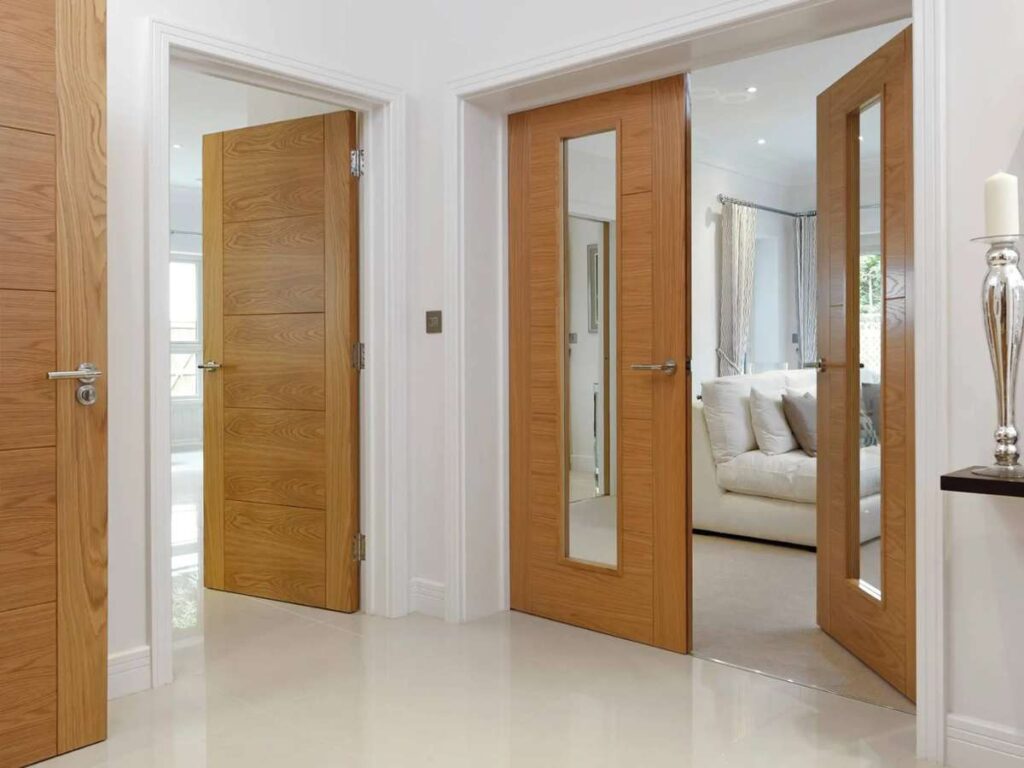
Conclusion
You’ve just seen 10 hotel door design ideas. From sleek glass to warm wood, quiet panels to bold colors each one tells a story.
Now it’s your turn to choose. What kind of story will your doors tell?
I still remember that hotel owner who felt like something was missing. Once we helped her choose the right doors, the space finally felt complete.
If you’re ready to bring those ideas to life, Vallisco is ready to help. We build doors that work across function, design, and safety.
Don’t wait for another renovation to get it right.
Let’s start now. Contact us today.
Recommended Reads for You
Interested in more? Here are some additional articles with insights and tips to keep you informed:
Still haven’t found what you’re looking for? Don’t hesitate to contact us. We’re available around the clock to assist you.



